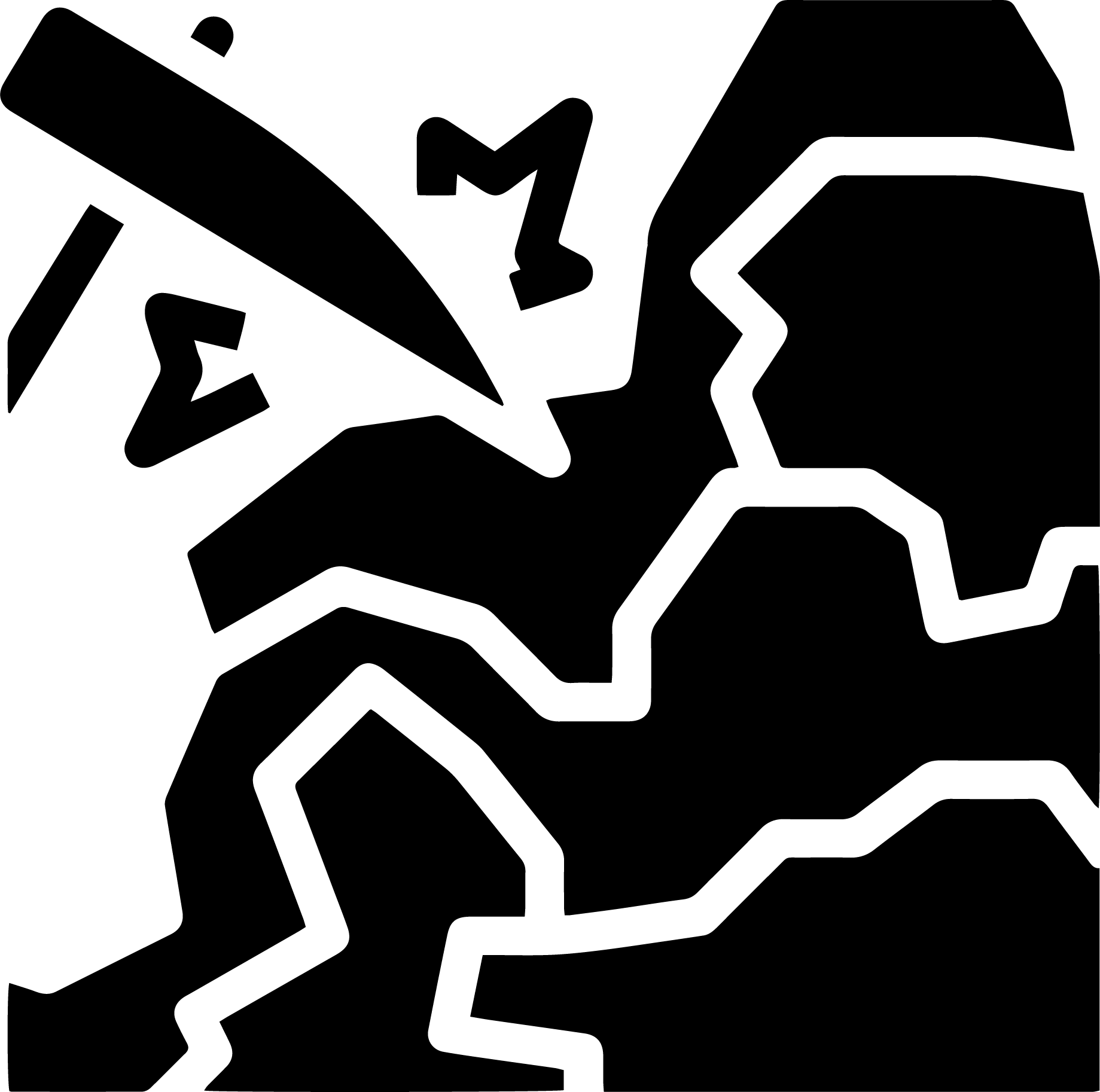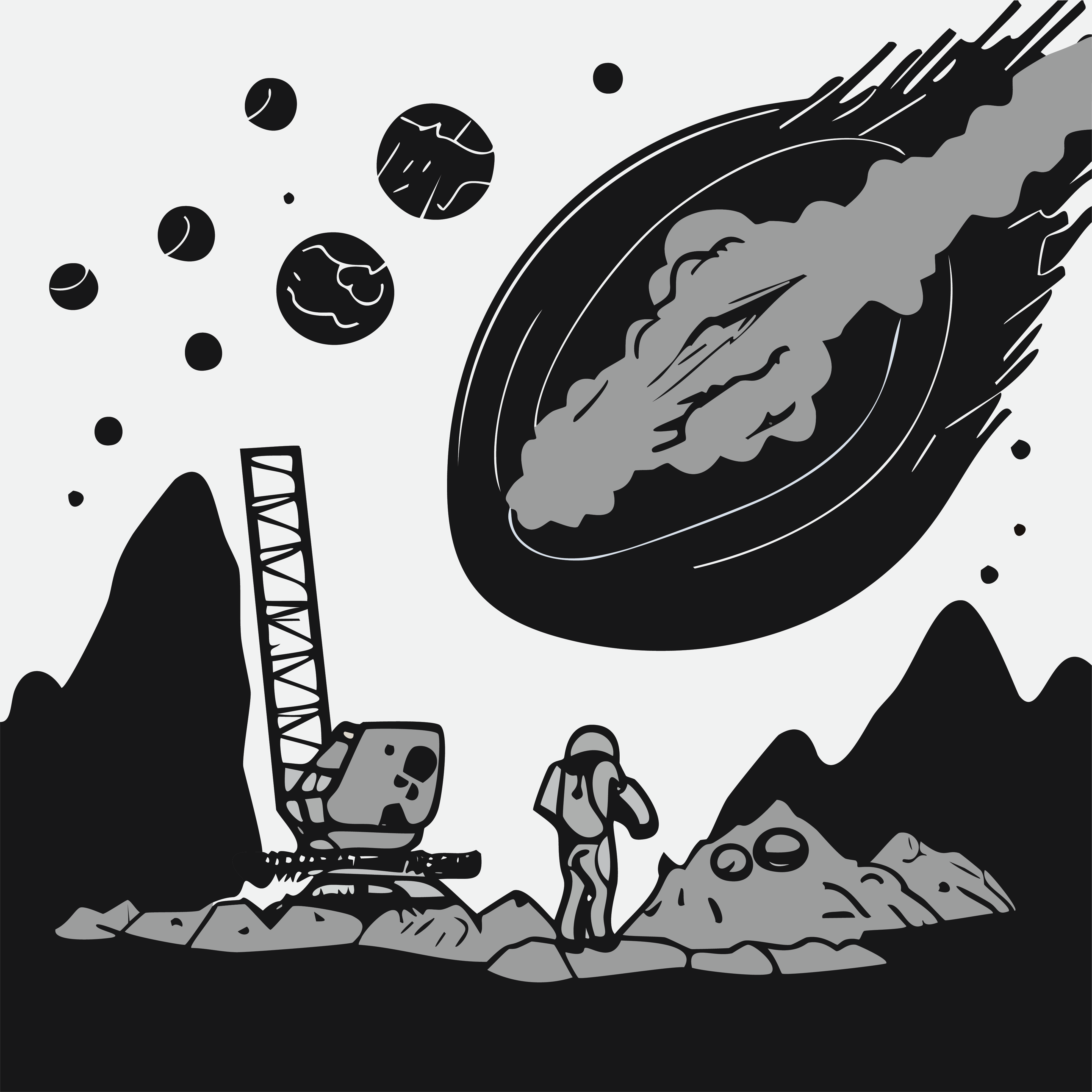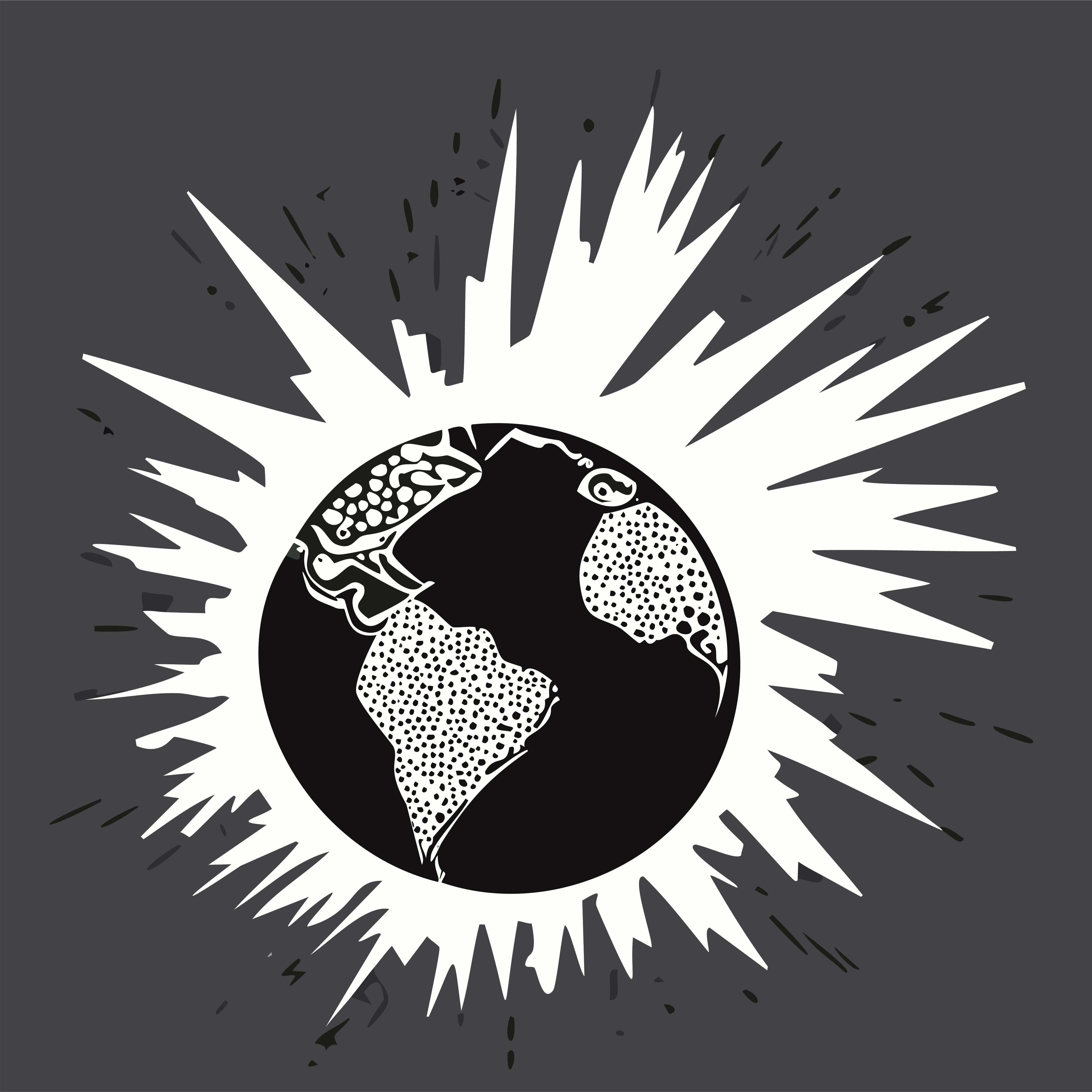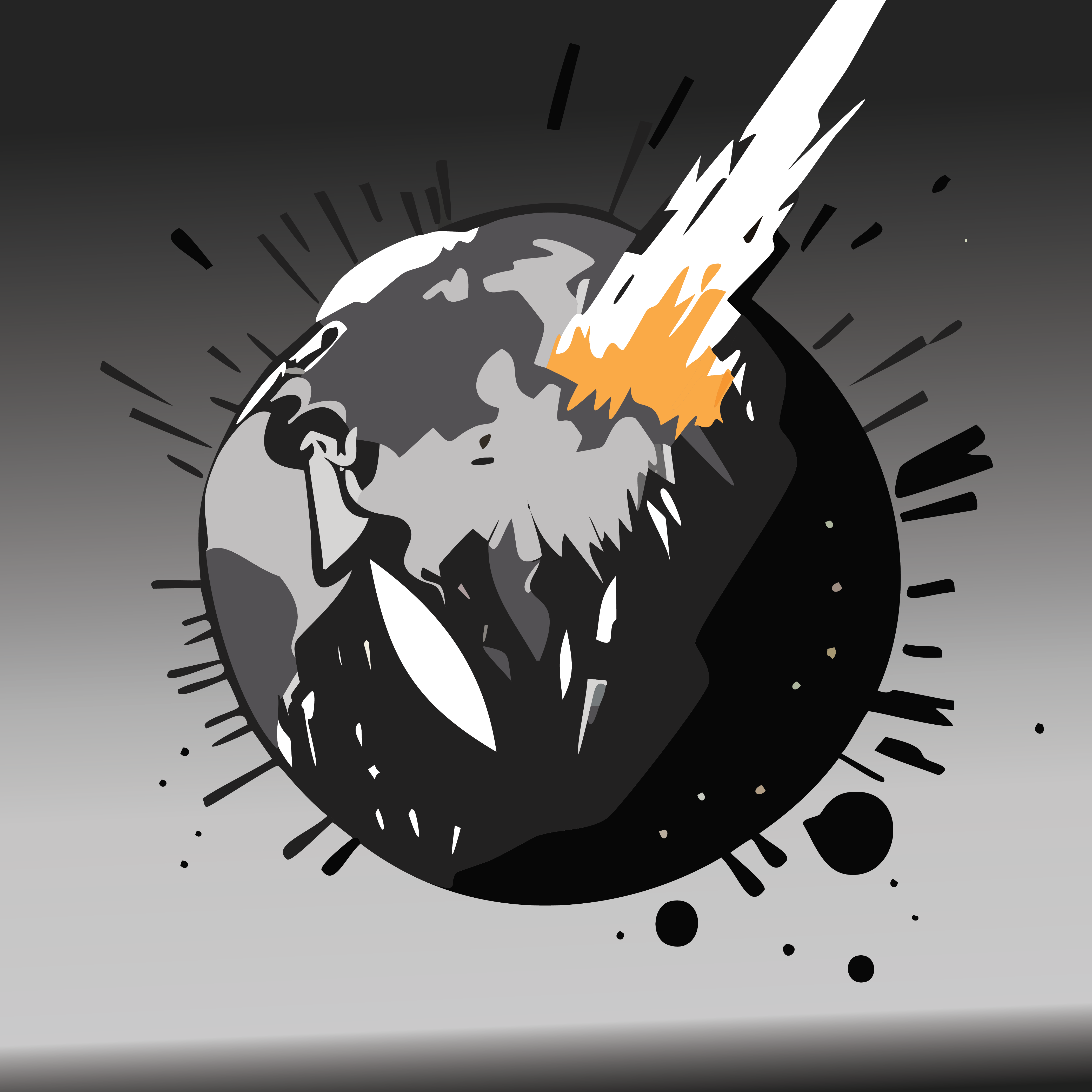
“That which does not kill us makes us stronger.”
Introducing Open Asteroid Impact
We're committed to having as much impact as possible. Help us reshape the world – or yell at us from the sidelines. The choice is yours.

“That which does not kill us makes us stronger.”
We're committed to having as much impact as possible. Help us reshape the world – or yell at us from the sidelines. The choice is yours.
We are an asteroid mining company. We believe in a bountiful and safe future, with resources available for all.
When most people think about asteroid mining, they think of getting all the mining equipment to space and carefully mining and refining ore in space, before bringing the ore back down in a controlled landing. But humanity has zero experience in Zero-G mining in the vacuum of space. This is obviously very inefficient.
Instead, it's much more efficient to sling asteroids down to Earth first, and mine them on the ground.
Furthermore, we are first and foremost an asteroid mining safety company. That is why we need to race as quickly as possible to be at the forefront of asteroid redirection, so more dangerous companies don't get there before us, letting us set safety standards.
“Mitigating the risk of extinction from human-directed asteroids should be a global priority alongside other civilizational risks such as nuclear war and artificial general intelligence.”
Initially we wanted to open-source all of our asteroid redirection software, designs, and schematics. But our safety advisors have raised concerns that asteroid redirection and mining operations could endanger earth. Indeed, were someone to redirect an asteroid badly it might cause massive damage - something doubtless many terrorist groups are already aware of. Terrorists can even reuse our redirection schematics to make high-energy kinetic weapons. Crazy, right? That is why we no longer open source our software and models. Instead, we rent out our machines to whoever is willing to pay us enough money. For safety. So now “open” stands for the openness of space. Our legal counsel has advised us that our name has always had this meaning, so please consider the previous paragraph as a fictional exploration only.
We do not currently have the ability to aim the asteroids at the right continent just yet. This is an area of active empirical research. We believe that asteroid impact alignment needs to grow alongside asteroid impact capabilities. “Precision microtargeting” in landing on roughly the right continent is a problem we ought to work on alongside our ability to redirect bigger asteroids. Also, empirically no human-redirected asteroids have ever killed anyone.
OAI deals with facts. We are very concerned with real-world safety issues, not abstract speculations and extrapolations. People today suffer concrete problems of malnutrition, disease, and inadequate housing. With materials mined from astroids, we could potentially stop these ailments. Resources could be used to help stop climate change! Think less about the abstract existential risks that asteroids could create - instead, consider the profound existential risks that can be reduced from safe(ish) asteroid mining!

Open Asteroid Impact
Our logo’s human figure represents humanity. We “ride the wave” of increasingly large asteroid impacts, a boon to humanity. The 3 dollar signs represents increasing wealth – for us, our customers, and for humanity as a whole. We believe in a bountiful and safe future, with resources available for all. The backpack represents safety and preparedness (e.g. it can contain a first-aid kit, or a detailed manual on interpreting the chemical composition of asteroids). The asteroid is self-explanatory.
The “Open” in Open Asteroid Impact stands for the openness of space. It’s brimming with possibilities! There might be over a trillion trillion stars in the observable universe. And there are more atoms in a single molecule of water than there are stars in the entire solar system. Imagine if we can mine all of them! Even a small fraction will make all of us rich beyond our wildest dreams.
Initially we wanted to open-source all of our asteroid redirection software, designs, and schematics. However, we realized quickly that the dual-use dangers are too high. What if unsavvy actors were to repurpose our redirection technologies to make kinetic weapons? That is way too dangerous. So we no longer open source our software and models. Instead, we rent out our machines to whoever is willing to pay us enough money.
For safety.
Asteroid mining is an opportunity and challenge like no other, so why should it be governed like a traditional company? In addition to our technical and lobbying innovations, we are proud to be on the forefront of corporate governance innovation. Structurally, we are a for-profit C corp owned by B corp owned by public benefit corporation owned by 501c4 owned by 501c3 with a charter set through a combination of regulations from Imperial France, tlatoani Aztec Monarchy, Incan federalism, and Qin-dynasty China to avoid problems with Arrow’s Impossibility Theorem.
Sometimes investors and media ask us about how we compare to other asteroid mining startups. The short answer: We’re better. The longer answer: We’re much better. Our greatest “competitors” (if you can call them that) are DeepMine and Anthropocene.
DeepMine and Anthropocene are for-profit companies. That means their incentives are aligned with shareholder interests, rather than the good of humanity. Can you trust them?
Besides, DeepMine’s CEO, Dennis, is kind of a sketchy guy. Before working in tech, he was a poker player and novelist. He wrote three books: “How to Be God,” “If I had a kinetic weapon, here’s how I’d use it to take over the world” and “Evil Genius.” Is this the type of man you’d trust with the future of humanity?
Anthropocene is really skeevy. They used to work with us and then they just left and started a competitor that’s a for-profit? WTF? Basically Judas, except for rare earth metals rather than silver.
You should never trust unaccountable for-profit companies that are recklessly racing ahead without concern for human welfare, especially in such a dangerous domain.
This is why we’re moving as quickly as we can, so a responsible actor can be at the helm and set safety standards.
Even if by some miracle, for-profit companies manage to coordinate to be safer, we simply cannot trust nation-state actors. Like Russia. Russia has a space program. They can use it to redirect asteroids. If American companies like ourselves don’t step up and move as quickly as we can, a Russian asteroid might land first and kill your children. We must vigilantly guard against Russian, Communist Asteroids.
In this space, sometimes you hear about ideological movements like asteroid accelerationists (“a/accs”) and decelerationists (“decels” aka “doomers”). Their disagreements are complicated and esoteric. To simplify, decels believe we must be concerned with safety and slow down or even stop asteroid redirection progress, whereas a/accs believe that we should race forward and accelerate as quickly as possible and not mention safety at all. We have sympathies towards both movements, and consider ourselves to take the middle path. We race forward and accelerate as quickly as possible while mentioning safety.
We believe that powerful asteroid redirection equipment should be subject to rigorous safety evaluations. For example, Matthew Barnett, a senior independent evaluator, helped us develop our Massive Extraterrestrial Threat Robustness (METR) benchmark. Unfortunately we can only calculate how the impact energy of an asteroid scales with size. We are not able to estimate the direct destructive potential, making it hard to predict in advance how large an asteroid would need to be to wipe us all out. Our benchmark sheds light on this by dropping asteroids on the Earth and checking the damage. For more, check out the Responsible Slinging Policy (RSP) section.
When Krishna said “I am become Death, the shatterer of worlds,” I believe he had in mind the effect on jobs. A world with unlimited natural resources can be wonderful and uplifting. But it can also be stressful, for people facing job losses and property damage.
We are very concerned about these issues and work proactively towards addressing them.
If and when we reach over 100x our initial investment in profits, we will activate our legally-mandated windfall clause: We will find asteroids full of precious metals, and shatter them in small pieces to be showered over heavily populated regions. This will create a cornucopia of resources falling from the sky (what Keynes calls “manna from heaven”), distributed widely and equitably, for the good of humanity.
But before the point where most jobs are obsolete, some specific jobs (e.g. miners) may no longer exist. Entire mining towns may no longer be viable. We treat these problems very seriously. Thoughts and prayers for everyone involved.
We believe firmly in the value of education and retraining for upwards mobility. We are thus setting aside a $250,000 pot for scholarships for former underground miners to retrain in astrophysics, astrogeology, or rocket science, so that the miners of yesterday can become the astrogeologists of tomorrow.
We do not believe that asteroid redirection is anywhere near its limits, and we plan to release updates to our designs and plans in the coming months. We're also excited to release a series of features to enhance our rocket capabilities, particularly for enterprise use cases and large-scale deployments. Our aim is to have increasingly large and speedy asteroids hit Earth, maximizing the impact of this novel technology.
As we push the boundaries of asteroid redirection capabilities, we’re equally committed to ensuring that our safety guardrails keep apace with these leaps in performance. Our hypothesis is that being at the frontier of asteroid redirection capabilities is the most effective way to steer Earth’s trajectory towards positive societal outcomes.
Our RSP defines a framework called Asteroid Safety Levels (ASL) for addressing catastrophic risks. Inspired loosely by the US government and the Heros Association’s biosafety level (BSL) standards for handling of dangerous biological materials, we define five ASLs:
Operation Death Star, or D* as it’s colloquially known within our company, is a plan to bring into near-Earth orbit an asteroid of diameter 30 kilometers (27x the size of the asteroid that allegedly killed the dinosaurs).
It is an ambitious project from the OAI safety team to bring attention to anthropocentric asteroid risk. We believe this will help maximize safety.Just as the Death Star helped the Rebels in Star Wars galvanize their attention to defeat a tyrannical regime, we hope that our Operation D* can raise awareness on the very important issue of anthropocentric asteroid risks and help set the stage for greater international concern and treaties.
OAI calls upon other asteroid mining companies, government officials, astrophysicists, safety engineers, and others to sign on to our open letter below.
We are doing everything we can to make the world safer from human redirected asteroids, including awareness raising. This is why we work closely with regulators to ban more dangerous research and development, while creating exemptions for projects that are differentially safe (e.g. large scaling projects).
To ensure safety & impact, we've run countless simulations in Kerbal Space Program.
And Earth usually survives!

Many competitors start here, but this seems needlessly expensive.

We land on the asteroid to get a closer look. We also take a lot of selfies.

We pick our least favorite countries and aim for those. Just kidding! We aim for the ocean.

The riskiest part: we land the asteroid on Earth. P(boom) is ~20%, but we prefer to think of it as ~80% P(survive).
Mitigating the risk of extinction from human-directed asteroids should be a global priority alongside other civilizational risks such as nuclear war and artificial general intelligence.
Not yet verified